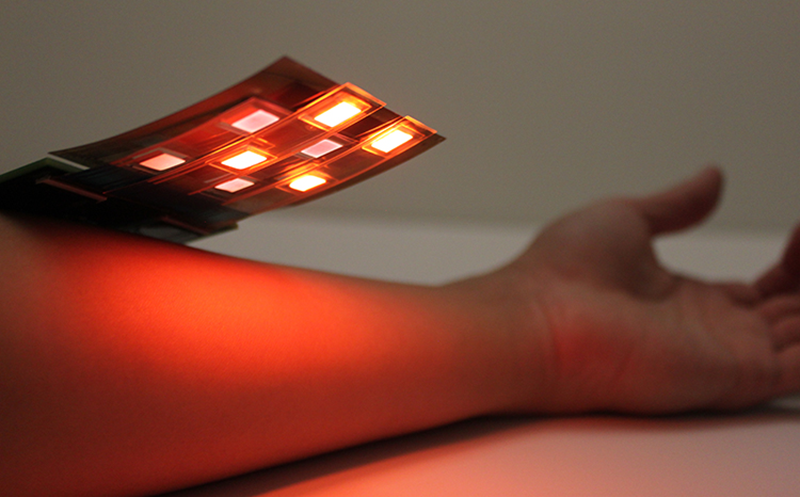Researchers at the University of California Berkeley have developed a flexible sensor that can map blood-oxygen levels over large areas of skin, tissue and organs, potentially giving doctors a new way to monitor healing wounds in real time.
As oxygen is crucial for healing of injuries, researchers expect that the mapping sensor would enable real-time monitoring of wound healing.
Related Flexible self-powered biosensors for Precisely and Continuously Monitoring Biological Signals
“When you hear the word oximeter, the name for blood-oxygen sensors, rigid and bulky finger-clip sensors come into your mind,” said Yasser Khan, a graduate student in electrical engineering and computer sciences at UC Berkeley. “We wanted to break away from that, and show oximeters can be lightweight, thin and flexible.”
Contrary to bulky fingertip oximeters, the new sensor is lightweight, thin and flexible. It consists of organic electronics printed on bendable plastic.
Unlike fingertip oximeters, it can detect blood-oxygen levels at nine points in a grid and can be placed anywhere on the skin. It could potentially be used to map oxygenation of skin grafts, or to look through the skin to monitor oxygen levels in transplanted organs, reports UC Berkeley News.
“All medical applications that use oxygen monitoring could benefit from a wearable sensor,” said Ana Claudia Arias, a professor of electrical engineering and computer sciences at UC Berkeley. “Patients with diabetes, respiration diseases and even sleep apnea could use a sensor that could be worn anywhere to monitor blood-oxygen levels 24/7.”

Currently used oximeters use light-emitting diodes (LEDs) to shine red and near-infrared light through the skin and then detect how much light makes it to the other side. However, these devices work on partially transparent body areas.
The new sensor is built of an array of alternating red and near-infrared organic LEDs and organic photodiodes printed on a flexible material. To test their sensor, the researchers used it to track the overall blood-oxygen levels on the forehead of a volunteer who breathed air with progressively lower concentrations of oxygen – similar to going up in altitude – and found that it matched those using a standard fingertip oximeter. They also used the sensor to map blood-oxygen levels in a three-by-three grid on the forearm of a volunteer wearing a pressure cuff.
Related Scientists Create New Stretchable, Wearable Sensor from Chewing Gum
“After transplantation, surgeons want to measure that all parts of an organ are getting oxygen,” Khan said. “If you have one sensor, you have to move it around to measure oxygenation at different locations. With an array, you can know right away if there is a point that is not healing properly.”
The study was published in the journal Proceedings of the National Academy of Sciences.












